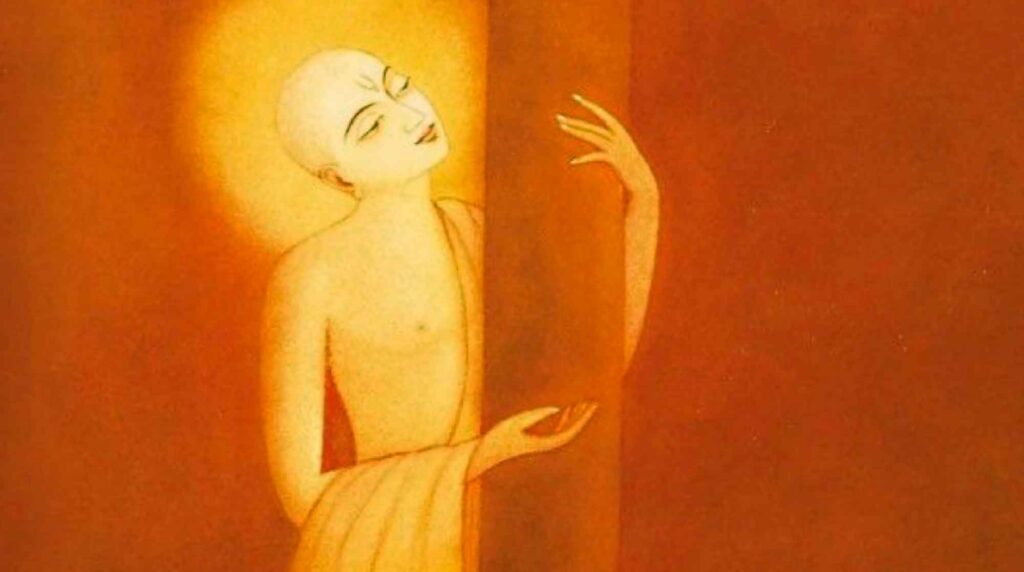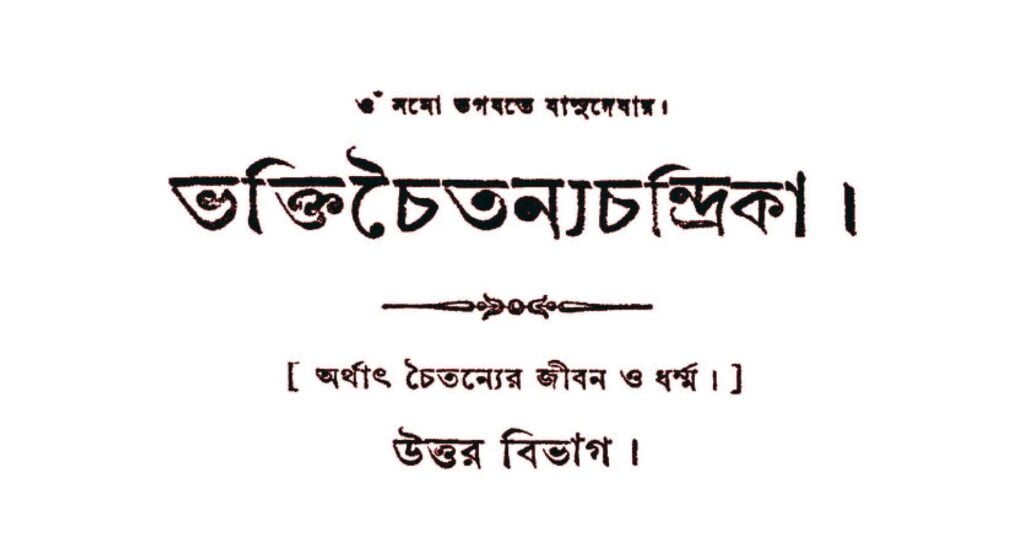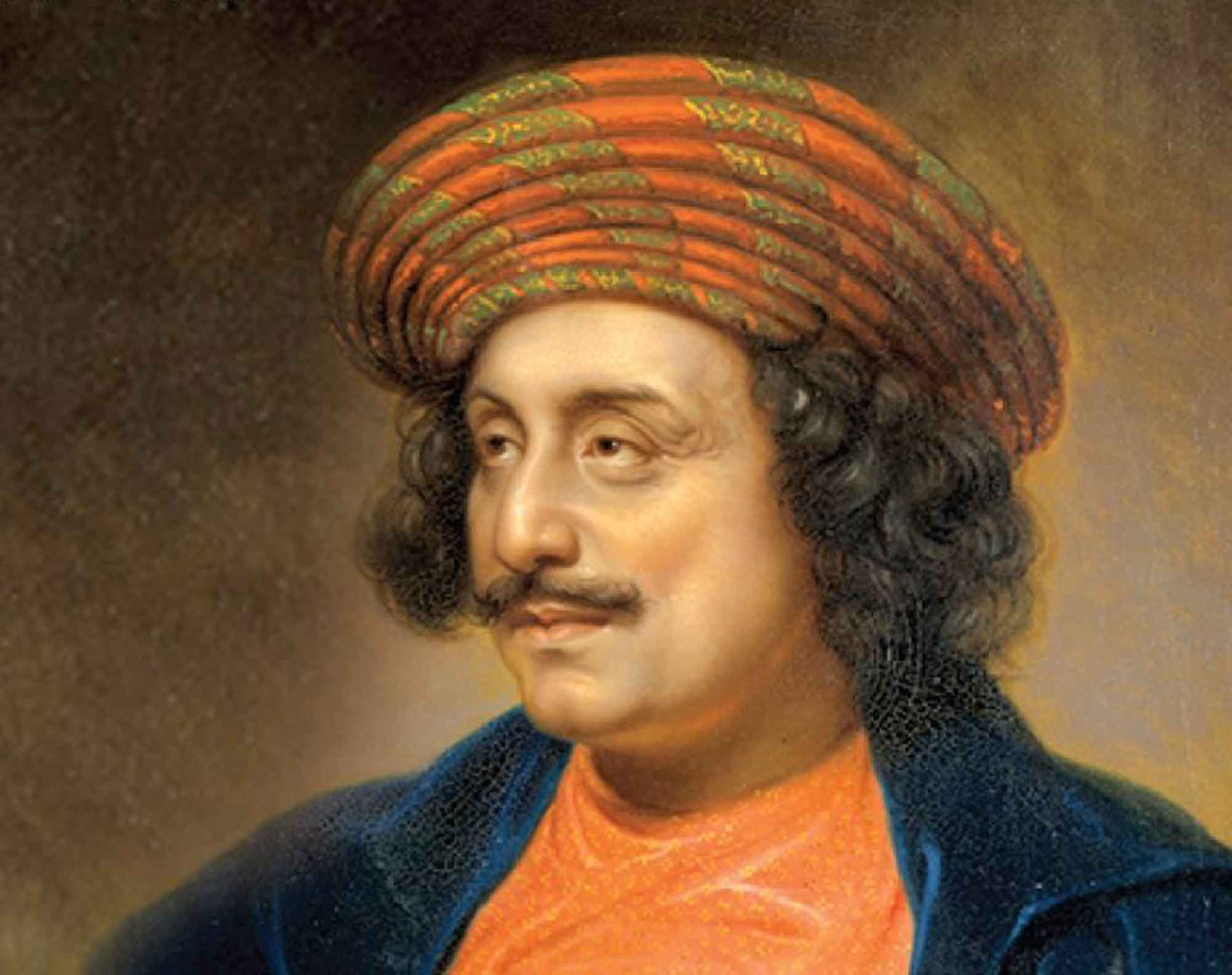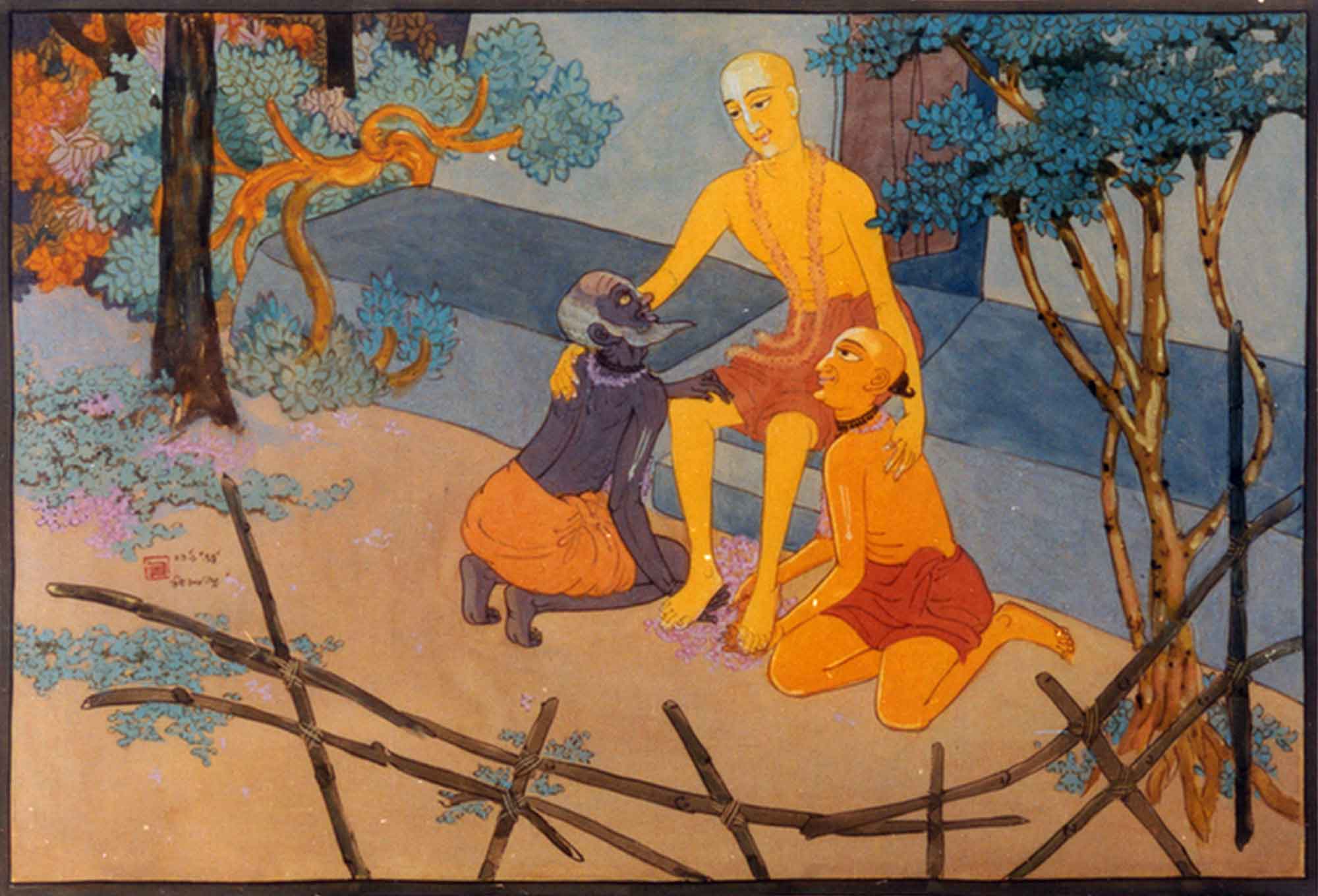Overview
'Śrī Jāhnavā Devī' was published in Sajjana Toṣaṇī, Vol 2 Issue 4 in 1885. In this article, Bhaktivinoda Thākura gives a brief biography of Jāhnavā Devī, the consort of Śrī Nityānanda Prabhu.
(translated by Swami B.V. Giri)
The fourth issue of Sajjana-toṣaṇī was published under the name, ‘Śrīmatī Jāhnavī Parameśvarī Issue.’ The birth anniversary of Śrī Śrī Jāhnavī Devi is celebrated on the 8th, which is the Pañcamī day of the month of Vaiśākha this year. This is a day of joy for the mahā-bhāgavatas who worship the feet of Śrī Caitanya. In about 1409-10 of the Śaka Era (1351-52 CE), Jāhnavā Devī appeared in Ambikā-Kālnā from the womb of Bhadrāvatī, the fortunate wife of Śrī Sūrya Dāsa Paṇḍita, who was most dear to Mahāprabhu.* At the appropriate time, Jāhnavā, who was endowed with all good qualities, along with her elder sister Śrīmatī Vasudhā Devī, were married to Śrī Nityānanda Prabhu.
* bhadrāvatī nāma śri-jāhnavāra jananī
ati pativratā sūrya-dāsera gharaṇī
(“The name of Śrī Jāhnavā’s mother was Bhadrāvatī. She was the very chaste wife of Sūrya Dāsa” – Bhakti-ratnākara)
We have heard from some that Sūrya Dāsa placed Jāhnavā’s dowry at the feet of Nityānanda Prabhu; however no one has been able to show us any proof of this.* Whatever the case, we need not make any judgement according to that.
* loka-śāstra-mate sūrya-dāsa bhagyavān
nityānanda-candre dui kanya kaila dāna
dekhi pātra kanya vipra-gaṇe praśaṁsaya
svarga-martya-pātālete haile jaya jaya
(“In accordance with the secular śāstras, the most fortunate Sūrya Dāsa gave his two daughters to Nityānanda-candra. Seeing this most suitable groom, the brāhmaṇas offered words of praise, and all the denizens of the celestial planets, the earth plant and the lower planets cried, ‘Jaya! Jaya’” – Bhakti-ratnākara)
Bhagavān Nityānanda’s śakti, Jāhnavā visited the Vaiṣṇavas in various parts of the country and succeeded in giving kṛṣṇa-bhakti to many people, and from time to time performed various miraculous deeds in society. Legend has it that Vasudhā’s son, Śrī Vīrabhadra Gosvāmī Prabhu, entered the courtyard with the intention of taking dīkṣā from Śrī Advaita Prabhu, and sought permission from his stepmother. At that time Jāhnavā Devī was pulling water from the well, wearing a gatra-manthanī (gāmcchā). Suddenly seeing her noble son Vīrcandra in front of her, she bowed down in shame, and being distracted, she manifested two extra arms from her shoulders to cover her breasts.
Vīracandra Prabhu was astounded by the divine powers of his step-mother, and grasping the feet of Jāhnavā Mātā, said, “Mother! I could not understand your glories! Please purify me of my offence.” The daughter of Sūrya Dāsa mercifully heard Vīracandra’s lamentation and instructed him in devotional rules and regulations.
In approximately 1465 Śaka Era (1543 CE), because Jāhnavā Devī was barren, she adopted as her son Rāmacandra, the grandson of Śrī Vāṁśī-vadanānanda and the son of Śrī Caitanya Dāsa, and later gave him dīkṣā.* She is non-different from Nityānanda’s śakti, Anaṅga-mañjarī. The Vaiṣṇava community is almost unaware of all the wonderful deeds performed by Jāhnavā Devī. Today we have just published this biography in this issue of Sajjana Toṣaṇī. Once the book Bhakti-ratnākara and other texts are printed, the readers of Sajjana Toṣaṇī and other mahātmās can take a more extensive look.
* taṅhāra bhajana haile jāhnavā āsiyā
kahite lāgilā pūrve vṛtānta jāniyā
pūrve kahiyācha – prathama putra diva tore
haibe kena māyā kari’nāhi deu more
(“When his bhajana was over, Jāhnavā came and knowing this, she spoke about the previous situation. “You had said before that you would give your first son. Now why are you deceiving me and not giving him?”- Mūralī-vilāsa)
katakṣaṇa pare kichu bāhya sambarilā
dui putra jāhnavāra pade samarpila
rāmāi paḍilā jāhnavāra padatale
bhāsila caraṇa dutī nayanera jale
jāhnavā karilā pṛṣṭhe hastāvalmbana
āśvāsa vacane tāṅre karāna cetana
dui hasta dhari tāṅre kahena vacana
vīracandra yena mora tumi-u temana
eta bali īśvarījī ājñā se laiyā
ibe kṛṣṇa nāma-mantra tāṅre śunāilā
(“After a while, they checked themselves externally, and the two sons surrendered to Jāhnavā. Rāmāi fell at her feet and flooded them with tears. Jāhnavā patted him on the back and then spoke words of reassurance to calm his mind as she held both his hands, ‘To me, you are the same as Vīracandra.’After this, he took instruction from Īśvarī and heard kṛṣṇa-nāma mantra from her.” – Mūralī-vilāsa)













